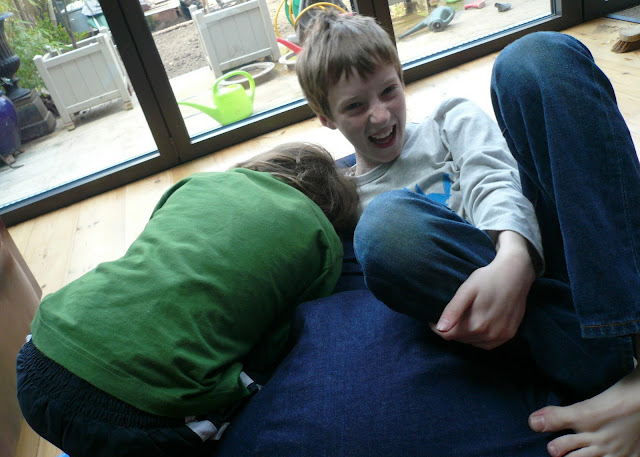Ta-da, here she is, my first skirt from a Japanese pattern book. An hour or two after cutting out my fabric, I had a lovely, elegant, single pleat skirt. I simply followed the instructions for the pleating as planned (well looked at the diagram, it was that clear) then put in the zip and waistband by using the same method plus a bit of common sense.
 |
| Front pleat in more detail |
I didn’t line the skirt in the end, as the fabric is a thick linen blend, so from a transparency point of view it should be OK. I was also worried I wouldn’t be able to co-ordinate the lining pleat with the main fabric pleat.
 |
| A bit wonky, but a big improvement on the zigzag |
I used my overlocking foot with an overlocking stitch (crucial point here) to create this effect on the seams. Thank you very much Gertie for shining a light on that one.
I’m so pleased I went for what was probably one of the simplest makes in the book (and you can’t get much more straight forward than an A-line skirt).
 |
| Here's the back pleat |
It came together so easily and has definitely given me the confidence to try another pattern. I suspect a large part of the success of the skirt was the simplicity and elegance of the cut. It looks pretty unprepossessing when you see the pattern pieces laid out, but when sewn together the garments miraculously become very flattering. Simple Chic is a very accurate title for the book.
There were a few comments on my last post asking about the patterns and pattern pieces. Just to clarify, Simple Chic contains 21 patterns, comprising one pair of trousers, three blouses, 12 dresses, three skirts, one coat and one suit. There are two giant pattern sheets with all the pieces for each pattern printed on. Japanese pattern books cost between £16 and £20 if bought in the UK (Simple Chic is £18), so that’s 21 patterns for £18. When you think a Collette Pattern is around £12 in the UK (and don’t get me wrong, in my opinion well worth every penny), these pattern books are amazing value for money.
 |
| Pondering the tricky decision |
Now, the tricky decision is, which pattern to sew next?...











































